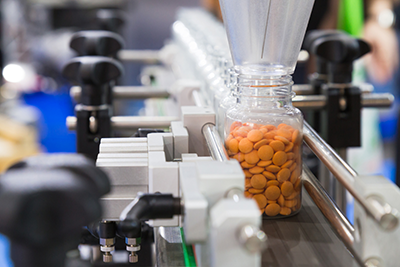
Pharmaceutical companies worldwide are turning to machine vision in more and more ways as technology advances. With increased computational power and high-level machine learning now available and practical, leading pharmaceuticals can lean more heavily on the help of machine vision. Below, we're going to discuss what machine vision is, why it's so in demand, and how it's revolutionizing pharmaceutical companies globally.
What is Machine Vision?
A machine vision system includes some kind of monitoring device, usually, a high-end camera, and a computer processing unit that can parse the visuals from the camera and make decisions based on recognized patterns.
Why Are Pharmaceuticals Adopting It?
Machine vision is particularly intriguing to pharmaceuticals, particularly because they need a very high level of accuracy and efficiency to produce and pack their products. From measuring doses to ensuring each package is sealed and appropriately labeled, every action needs to be precise.
Machine vision has advanced enough to a level where accuracy is extremely high with little to no chance for error. With a lower cost per action and a better rate of accuracy than humans, machine vision is being applied to all parts of the pharmaceutical production chain.
What Are They Using it For?
The possibilities are nearly endless, but below, we'll take a look at some of the common tasks machine vision is currently being used for by pharmaceutical companies. This is by no means an exhaustive list, but it will give you a good understanding of machine vision applications throughout the industry.
1) Packaging
Machine vision is being used to count the number of doses being added to each bottle and perform a very rapid but highly accurate inspection of each pill or unit to determine any damage. It can also inspect for inaccurate pill sizes, shapes, and colors. It can also scan a final package for damage, proper labeling, and accurate barcode.
2) Tracking/Documentation
Given the sensitivity of medicines being produced and shipped, it's essential to track and document when each package left a facility, when it arrived at its destination, and that the full shipment got there safely. Machine vision can accomplish all of these tasks rapidly and with a high degree of accuracy.
3) Lab Work
Machine vision can also be applied to administrative lab work, including digitizing documents and organizing them for comparison or for compiling medical records. Documents and forms for individual patients or ongoing studies or tests can be transferred rapidly to a permanent, digital form by these machines with ease.
Machine vision is revolutionizing the pharmaceutical industry because it offers accuracy and efficiency for quality control and other tasks that would otherwise be time consuming and prone to errors. Contact one of our specialists to learn more about how machine vision can be implemented at your company to speed up production and increase accuracy and quality control.
